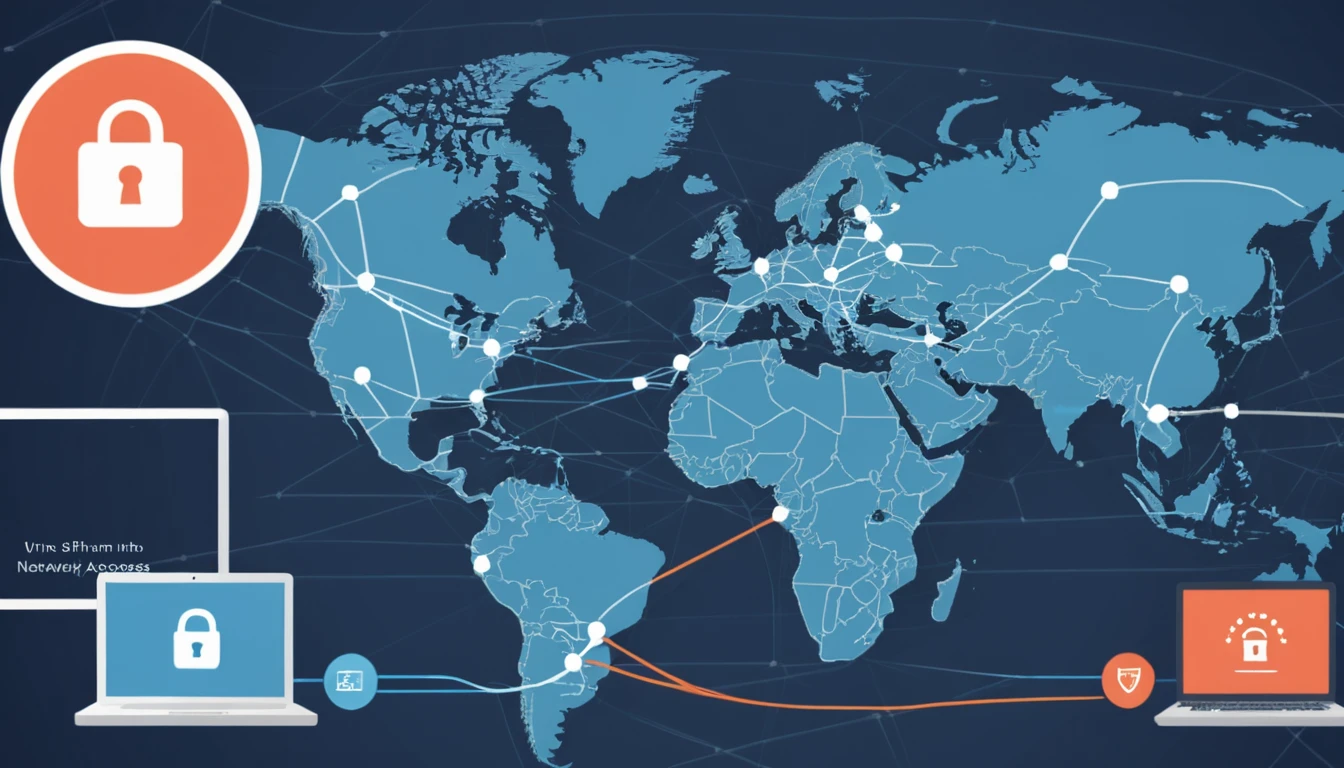The Inherent Risks of Traditional VPNs
While Virtual Private Networks (VPNs) have long been a staple in the realm of cybersecurity, they are not without their vulnerabilities. Recent years have unveiled a host of security risks associated with traditional VPNs that organizations must recognize and address. A concerning statistic is that over half of companies using VPNs have reported experiencing security incidents linked to this technology. This alarming figure underscores the inherent risks tied to expansive network access, whereby attackers can exploit vulnerabilities to facilitate lateral movement within the network.
One critical issue with traditional VPN architectures is their tendency to grant users broad access to the network, which can become a double-edged sword. When users gain this extensive access, the potential attack surface increases significantly. An attacker who compromises a single account may find it relatively easy to navigate the network and access sensitive data, as the VPN does not inherently distinguish between users based on their actual needs or roles. This situation can lead to severe breaches and data exposure, which is a significant concern for organizations striving to maintain robust security postures.
In addition to the security vulnerabilities, traditional VPNs also suffer from performance drawbacks that can hinder user experience. Centralized traffic routing often leads to increased latency, resulting in slower connection speeds and interruptions that can frustrate users. These performance issues can discourage employees from utilizing VPNs effectively, which could drive them to seek alternative, and potentially less secure, methods of accessing company resources. Furthermore, the complexities involved in managing and maintaining a VPN infrastructure can strain IT resources, diverting attention from other pressing security priorities. In light of these challenges, organizations are increasingly seeking modern solutions like Zero Trust Network Access (ZTNA) to address the limitations of traditional VPN frameworks while enhancing overall security.
Understanding Zero Trust Network Access (ZTNA)
Zero Trust Network Access (ZTNA) represents a significant evolution in security architecture, directing its focus towards a fundamentally different access model compared to traditional Virtual Private Networks (VPNs). At its core, ZTNA operates on the premise that no device or user should be trusted by default, regardless of whether they are inside or outside the network perimeter. This model shifts away from the conventional approach of granting blanket access to the entire network, instead advocating for a more nuanced, identity- and context-based resolution before allowing entry to specific applications.
Central to the ZTNA framework is the principle of least privilege, which dictates that users and devices should only be granted access to the resources absolutely necessary for their roles. This reduces the attack surface and minimizes the risk of internal and external threats. Users accessing the network under ZTNA must first undergo rigorous verification processes, which include validating their identity through multi-factor authentication and scrutinizing their environmental context—such as device health and location.
ZTNAs operate dynamically, continually reassessing user identity and context throughout their session. This adaptive method enables real-time adjustments to access permissions based on the user behavior analysis and other contextual clues, rather than relying on static access rights. By implementing such criteria, organizations can enhance their overall security posture, significantly reducing the likelihood of unauthorized access and data breaches that are prevalent with traditional VPN solutions.
Furthermore, the ability to closely monitor and log user activity provides organizations with invaluable insights into access patterns, enabling swift identification of any anomalies. This proactive stance is in stark contrast to the reactive nature of traditional VPNs, showcasing why the transition to ZTNA is considered a forward-looking approach to modern cybersecurity challenges.
Key Use Cases for Implementing ZTNA
The adoption of Zero Trust Network Access (ZTNA) has become increasingly relevant in today’s security landscape, particularly in hybrid work environments. One of the primary use cases for ZTNA is its ability to provide secure, granular access for remote employees. Unlike traditional VPNs that grant broad access to corporate networks, ZTNA ensures that users obtain only the permissions necessary for their specific roles and responsibilities. This capability enhances security by minimizing the attack surface and allowing organizations to maintain better visibility into user activities, regardless of their geographical location.
In addition to accommodating remote work, ZTNA plays a vital role in facilitating cloud migration. As more organizations move their applications and data to the cloud, ZTNA enables direct, secure connections to these resources. This approach not only enhances performance by reducing latency but also improves efficiency as users access critical applications without the need for complex configurations typical of legacy VPN systems. Consequently, enterprises can experience seamless integration between on-premises and cloud environments, creating a unified approach to security.
Another important use case involves enabling secure access to corporate resources from unmanaged devices. In today’s mobile-first world, employees often utilize their personal devices for work purposes. ZTNA’s architecture allows stakeholders to securely authenticate and connect to the company network from these devices while enforcing security policies to prevent unauthorized access. Furthermore, ZTNA integrates effectively with SD-WAN technologies, ensuring that remote contact center operations can maintain high-quality service regardless of the user’s location. This adaptability showcases ZTNA’s relevance in modern enterprise settings, highlighting its potential not just for improved security but also enhanced operational efficiency.
ZTNA’s Role in Enhanced Security for Legacy Applications
Legacy applications present a unique set of challenges for organizations striving to maintain robust security measures. Often, these systems are not compatible with newer security technologies, which can lead to vulnerabilities that cybercriminals may exploit. Zero Trust Network Access (ZTNA) provides a modern solution aimed at ensuring secure access to these older, on-premise applications while maintaining compliance with evolving security standards.
One of the key advantages of ZTNA is its ability to implement a granular access control model. This model allows organizations to verify every user and device attempting to access legacy applications. By establishing identity-based access controls, ZTNA ensures that only authenticated users are granted entry. This significantly enhances security as it eliminates the need for a traditional perimeter, often seen as an inadequate measure in today’s cyber landscape. Through continuous authentication and authorization, ZTNA monitors the behavior of users, reducing the risks associated with legacy systems.
Furthermore, ZTNA can streamline access processes during critical business transitions, such as mergers and acquisitions. By providing a flexible and secure framework, organizations can integrate legacy applications into their security protocols without overhauling existing infrastructure. This is particularly beneficial for maintaining operational continuity and protecting critical data during times of change, allowing businesses to focus on strategic growth rather than cumbersome security adjustments.
In summary, the implementation of ZTNA not only addresses the inherent risks associated with legacy applications but also positions organizations for future growth. By enabling secure access and enhancing overall security measures, ZTNA serves as a pivotal component of an organization’s broader security strategy, ensuring that both legacy and modern applications coalesce in a secure environment.





I like this internet site because so much utile material on here : D.